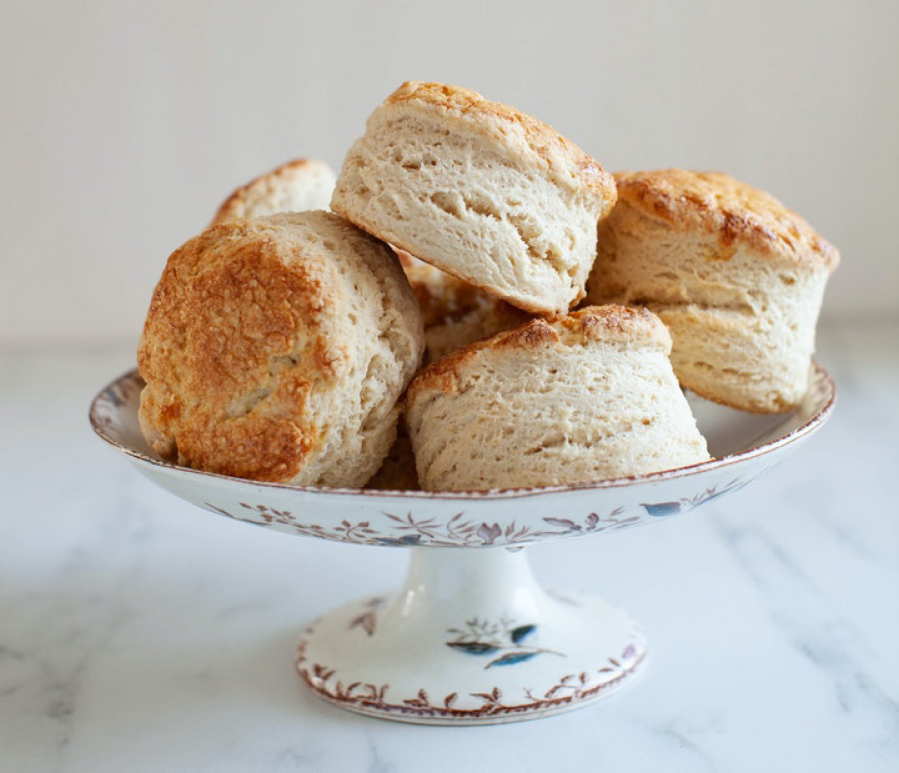“Every table in Ireland served scones with a jar of marmalade, which pretty much satisfies all my needs,” she wrote.
Here’s Francois on …
What makes a scone “Irish”: “In Ireland, a scone is a scone is a scone. Wherever you go, they’re very similar. There may be some small tweaks from family to family. In America, you find every shape, size and flavor. But in Ireland, they’re all the same size, and they’re round, and there won’t be anything in them. You’ll have one for breakfast, and there will be a thousand things to put on it.”
The power of Irish butter: “Why I dreamed about these scones after leaving Ireland was the butter. I’ve never had dairy like that, and not just the butter. I had this Victoria sponge with strawberry jam and whipped cream, and I was certain that there was something else in that whipped cream – sour cream, or mascarpone – because it was so rich. Their cream is fattier, and their butter is fattier. They leave all the fat in, and that makes all the difference. Obviously, because it’s Ireland, it’s all grass, and the cows eat grass all the time, and so the cream tastes different. The color is so pretty, and the texture and the flavor is so good. I didn’t get that until I went there.”
Tips for first-time scone bakers: “This recipe is so easy. If you’re entering the scone/biscuit world, this is a good one to start with. It’s not one of those where you have to keep the butter super-cold, it’s not one of those crazy recipes where it’s going to fall down on you. A lot of recipes from Ireland and England and Australia use self-rising flour, but I find that it can be tricky for people. I translated the recipe back to all-purpose flour. That’s what Americans use. Self-rising flour has just never caught on here.”



